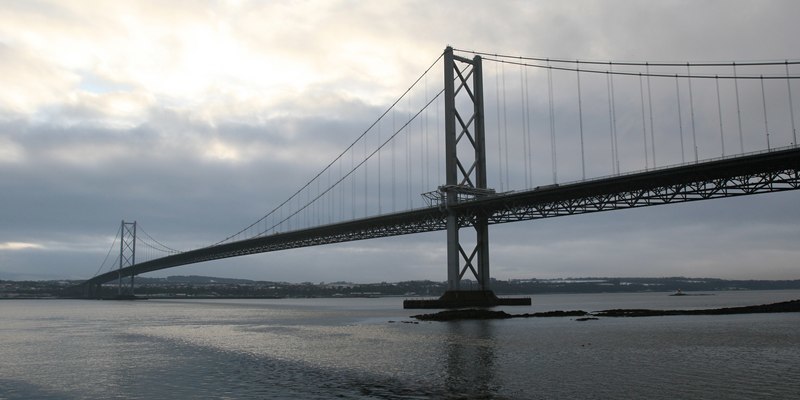The structure of the Forth Road Bridge is not insured despite the threat of terrorism or it being hit by a marine vessel, it has been revealed.
Members of the Forth Estuary Transport Authority (FETA) feel that the risk of a terrorist attack or the bridge being hit by the likes of aircraft are “minimal” and they have taken the decision not to proceed with insuring the structure of the iconic bridge as they feel the money could be better spent on other things.
Forth Road Bridge chief engineer and bridgemaster Barry Colford said there had been a “couple of bumps and scrapes” from marine vessels and disclosed that talks had taken place with security chiefs about possible terrorist attacks.
He also said discussions had been held with Babcock with regard to the safety aspect of Royal Navy aircraft carriers, which are being built in Rosyth, as they travel under the bridge in the future.
The bridge was built in 1964 but not insured until 1995.
Mr Colford said FETA had received several quotes from insurance companies but his preferred option was to have cover for ‘other property,’ which excludes the bridge structure.
He said, “The first 30 years of the bridge’s life went by without it being insured.
“It was decided to insure it in 1995 as it was then felt that the bridge towers were not designed to take the impact of a marine vessel hitting them.
“The result of this was felt to have been pretty catastrophic. It was also felt that insurance should cover interruption to the tolls.
“But the impact from marine vessels has been lessened with the strengthening of the towers’ defences.”
He continued, “We have had talks with the police and Transport Scotland about a terrorist strike but the risk has been low for some time.
“Also, the risk from an aircraft hitting the bridge is fairly minimal.”
Mr Colford said that “close discussions” had taken place with Babcock and Forth Ports regarding the two aircraft carriers, HMS Queen Elizabeth and HMS Prince of Wales, in the event of either or both of them sailing up the Forth.
“Forth Ports control marine traffic up and down the Forth and any vessel that can get under the Forth Bridge (rail) can get under the Forth Road Bridge,” he added.
“The tower defences are designed to absorb the energy from any type of marine vessel, including warships.
“Personally, I feel that to insure the bridge structure on a first loss basis at a premium of £67,558 does not represent value for money and is money that could be used elsewhere.
“If there was to be a catastrophic event to the bridge then the expense would have to be met by Transport Scotland, who would have to provide funding to rebuild the bridge. It could be argued that capital is already in place as part of the Forth replacement crossing.”
The board of FETA has agreed to insure only “other property” and not the bridge structure at a cost of £6024.
